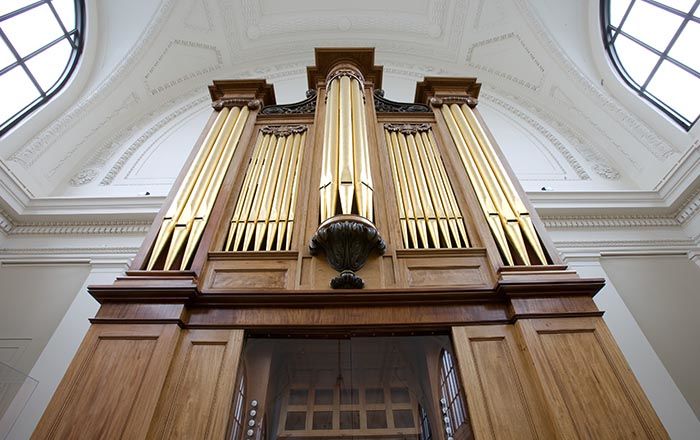Nail Violin
Not on view
The German violinist Johann Wilde invented the nail violin around 1740. The instrument consists of a wooden soundbox (circular or semicircular) and metal nails. Sound is produced by drawing a violin bow across the nails, creating bell-like tones. While it has limited capabilities, the instrument was popular in the eighteenth century and other makers built similar instruments in various forms.
Technical description: two flat wood soundboxes, basically circular but cut straight on one side along a chord, the smaller attached above the larger and bearing around its circumference 37 iron staples of graduated height, arranged chromatically in two rows and driven through the thin outer wall into internal bracing; on the top surface of this smaller soundbox, cut into the spruce soundboard, a circular soundhole that once held a rosette (missing). Played with a bow (missing). (Linda Moot, 1978)
